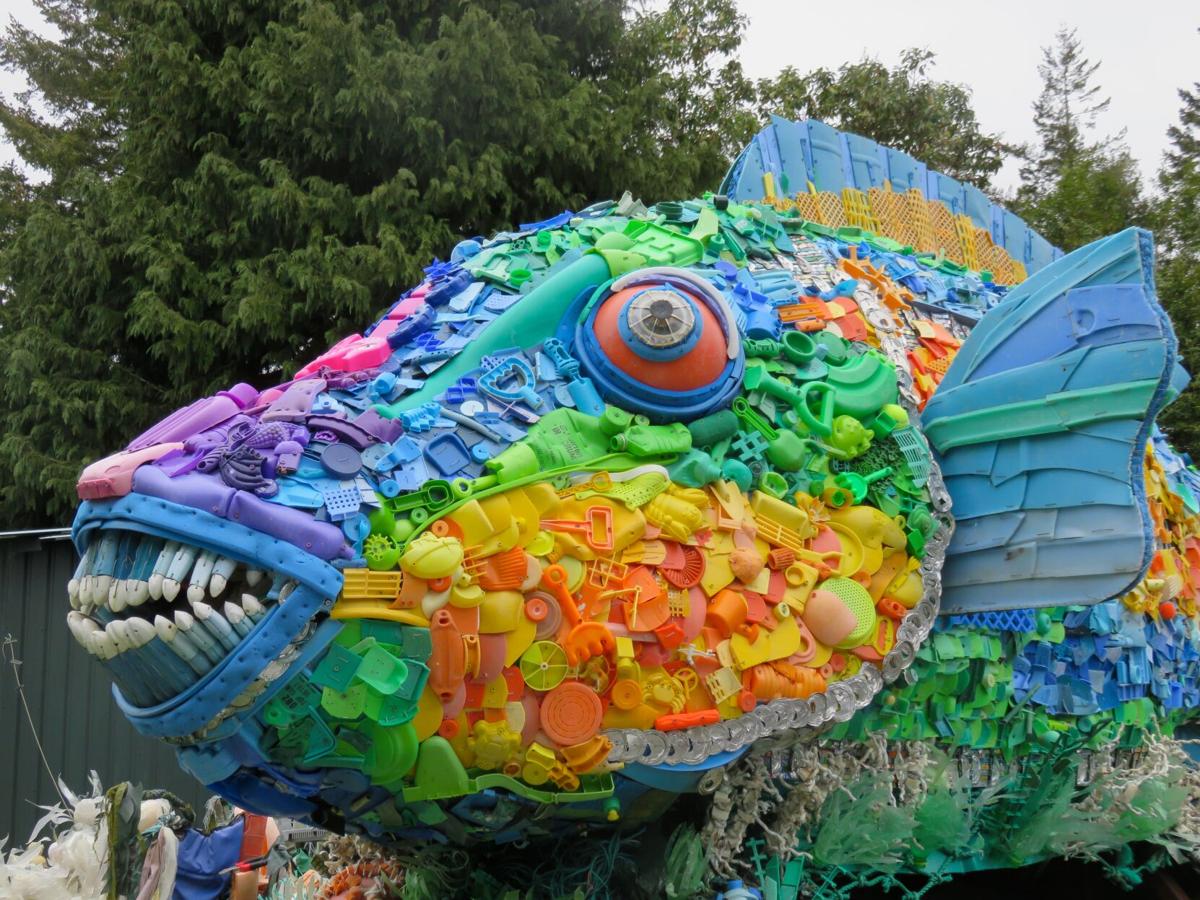Larger than life sea creatures have taken up residence at the Tucson Botanical Gardens.
The exhibit “Washed Ashore: Art to Save the Sea” brings six elaborate sculptures made entirely from marine debris, symbolizing the impact of plastic pollution on sea life.
Familiar items like buckets and shovels are placed at children’s eye level to convey the importance of keeping beaches clean.
“This eye-opening exhibit not only draws attention to the massive amounts of plastics in our waterways but also educates us on the importance of conservation,” said Michelle Conklin, CEO of Tucson Botanical Gardens, in a news release.
The exhibit is a partnership with the Oregon-based nonprofit Washed Ashore. Over the past decade, the organization has processed more than 35 tons of plastic pollution, creating 85-plus works of art that raise awareness about the global marine debris crisis, the news release said.
Washed Ashore’s giant sculptures have been on display at major venues including the Smithsonian National Museum of Natural History in Washington, D.C.
On display through June 30, Tucson Botanical Gardens plans to offer educational programs and youth activities centered around the whimsical exhibit, including guided tours.
The gardens, at 2150 N. Alvernon Way, are open daily. Admission is $19 for adults, $10 for kids ages 4-12 and $15 for students, seniors and military members.
Learn more at tucsonbotanical.org/exhibit/washed-ashore.
Plastics and climate change pose major threats to the health of the oceans says Lucy Woodall, associate professor of marine conservation biology and policy, University of Exeter, and principal scientist, Nekton Foundation. Average global sea surface temperatures have increased by approximately 0.13°C per decade over the past 100 years, according to the US National Oceanic and Atmospheric Administration (NOAA). "There's two really big things we can do to help, and one is to reduce global emissions. We need to do that immediately and also to set up large-scale protected areas," says Cassandra Brooks, assistant professor in environmental studies, University of Colorado Boulder. Plastic pollution is another big threat to oceans. According to the International Union for Conservation of Nature (IUCN), at least 14 million tonnes of plastic end up in the ocean every year, and plastic "makes up 80% of all marine debris found from surface waters to deep-sea sediments." "Plastics are ubiquitous in our oceans, and they're also the ultimate sink for when plastics come from the land and into our sea," says Woodall. Last week global negotiators agreed to craft a draft treaty to end plastic pollution, a preliminary but crucial step toward tackling one of the most lasting sources of human waste.




